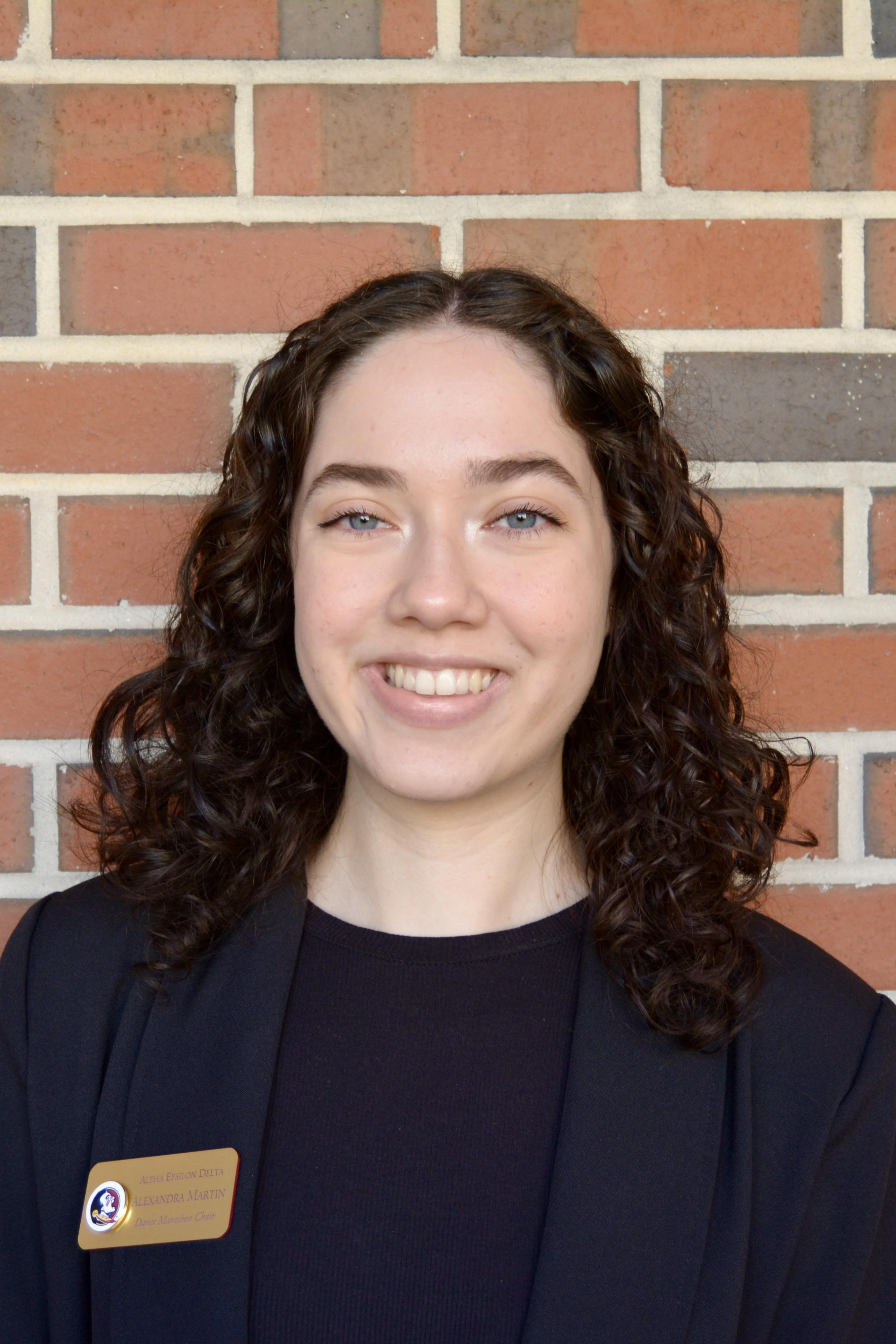Research Symposium
24th annual Undergraduate Research Symposium, April 3, 2024
Alexandra Martin Poster Session 1: 9:30 am - 10:30 am /432

BIO
I am a current student at Florida State University who is majoring in Biology with a minor in Chemistry. I received my Associate in Arts Degree from Miami Dade College in high school. My passion is in the healthcare field and I have volunteered at Tallahassee Memorial Healthcare, interned abroad with Clinica Sorolla, and shadowed doctors during my time in college! I am becoming a Certified Medical Assistant this semester and will be interning in Pediatrics over the summer. I am currently a research assistant at FSU with Dr. Bryant Chase in the Biology department where we conduct research on muscle mechanics and biopysiology. Outside of academics, I am a part of Seminole Striders, volunteered with FSUs School of Theatre, and was Delegate Assistant for Dance Marathon with Alpha Epsilon Delta.
The Applications of Printing 3D Structures
Authors: Alexandra Martin, Dr. P. Bryant ChaseStudent Major: Biology
Mentor: Dr. P. Bryant Chase
Mentor's Department: Department of Biological Sciences Mentor's College: Florida State University Co-Presenters: Ryan Schroy, Michelle Rodriguez, Lauren Blackwell
Abstract
3D printing is a form of manufacturing physical object from a three-dimensional digital model. ChimeraX is a software used to manipulate and analyze atomic structures and their molecular components. ChimeraX was used to modify 7KO4, a structure of cardiac native thin filament, and other high-resolution structures such as 8UWW (troponin), to prepare for 3D printing. Through the EMDB website, these structures were downloaded, modified, and through trial and many stl files later successfully printed. For the purpose of building a structure that can be separated and differentiated, ChimeraX will be used to color the different components of a muscle cell (actin, tropomyosin, and troponin). These components can then be magnetized with the aim of reassembly to understand how their processes work together. When 7KO4 was printed, it was used as a model to clarify findings in muscle mechanic laboratories among researchers in the Biology Department. We hope to bring awareness to the benefits of visual model usage in educational settings as well as for future research purposes through the use of 3D printing and ChimeraX. This project demonstrates the importance of a physical cellular structure that is normally understood in its photographed two-dimensional state. Outside of the educational sphere, 3D models can aid in the identification of missing components or contribute towards higher understandings of the molecular structures. These prints can be modified and added to as new research develops and ideas are discovered.
Keywords: Muscle Mechanics, 3D Printing, Calcium Concentration, 7KO4, Education


